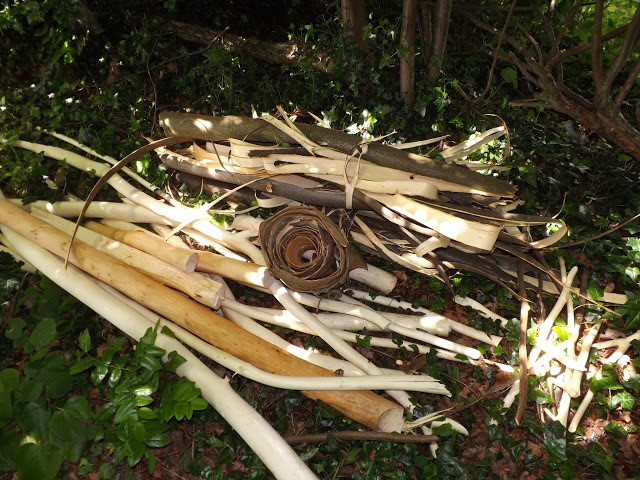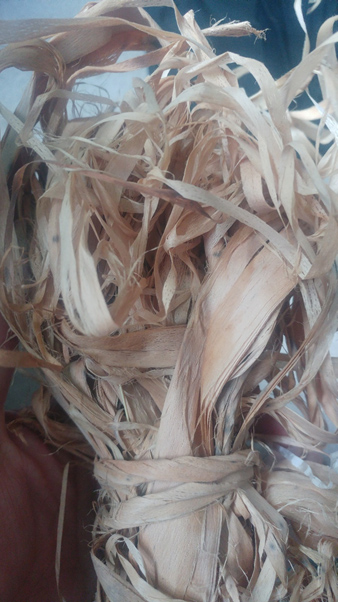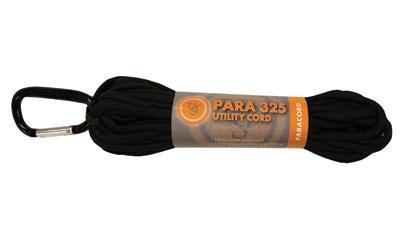Cordage and Accessories for Survival and Outdoors
December 10 2017
Long before celebrated Canadian bushcraft and survival expert Mors Kochanski dedicated a chapter of his famous book Northern Bushcraft to the topic of 'bindcraft' and before Dave Canterbury’s concept of five C’s of survivability became popular Stone Age hunter gatherers were creating cordage from the bark of willow and basswoods, grasses and animal skins.
Strong cord is vital for so many day to day tasks, and even more so in a survival situation, nowadays we don’t have to rely on natural materials for cord if we need to we can split it down from larger ropes, improvise it from seat belts, straps, belts, shoe laces or duck tape. It doesn't matter as long as you have something to pitch a tarp shelter, make bow drill strings or improvise traps. Cord has a host of uses beyond just tying knots, jute twine can be shredded down to its constituent fibres and used for fire lighting, it can also be used to make a wick for an improvised lamp or candle, lamp wick was traditionally used to make the bindings of old fashioned home made snow shoes.
Being able to make our own cord from natural materials is a great skill and a useful ability for those who spend a lot of time outdoors or in preparation for a survival situation.

Figure 1 Lime and elm logs stripped of their bark which is rolled up ready for processing into strong cordage.
The easiest way to get plenty of basswood bark is to fell a large 'sucker', the trees send up shoots or suckers from the base of a mature tree and these can get quite large, if you can fell one that is wrist thick or even larger and as long as you can find you will get a huge amount of fibre for cordage making. Once you have felled it you can strip the bark off using a stick carved to a chisel shape at one end and it should come off in one piece.
Once the bark has been removed it needs to be allowed to 'rett' or ferment in water, this process rots away some of the plant fibres leaving only the fine flexible fibre that we want to use for our cordage. Ideally this water should be running but a large trough is an acceptable substitute.
Once retted the inner bark can be stripped from the outer bark and dried ready for future use. If you are careful some of these strips can be as long at the sucker they were cut from and the longer the individual fibres the stronger your cord will be as you will have to do less splicing and joining.

Figure 2 Basswood bark fibres
Your two main options for turning your processed fibres into cord is plaiting or reverse wrapping, reverse wrapping is the better option for plant fibres in my opinion. Reverse wrapping takes a little getting used to but produces an excellent cord that will look just like the kind you might buy in the shops and which will not fray when cut. To reverse wrap your fibres into cordage you will need to find the middle of a bundle of fibres, take the bundle between the thumb and finger of each hand and twist in opposite directions until the fibres kink and form a loop. This loop is going to be one end of your cord. From there on you will hold the twisted portion of the fibres to keep them still and then with your other hand you will twist the upper bundle of fibres between your thumb and index finger until is tightly twisted and then take the lower bundle of fibres behind the first so that it is now uppermost, repeat the process.
When you have finished twisting and wrapping, twisting and wrapping, twisting and wrapping you will have very strong cord which could theoretically be used for all sorts of things, it is strong enough to use for snares and prehistorically it would have been, it’s strong enough to hold fish and make lashings and bindings.
One thing that’s for sure is its more rustic than paracord but it will never be as strong or versatile so never be caught unprepared without it even if you do have the skills to make your own cord. To make sure you always have the cord you need make sure you pack genuine paracord into your survival kit and bug out bag. Never head out on an expedition in the wilderness without a store of paracord, genuine military specification cord contains multiple inner stands which can be gutted from the nylon sheath and used for smaller tasks such as improvised fishing line or thread for carrying out repairs to your clothing and equipment. To make sure you always have some on you could consider wearing a paracord bracelet. Having one of these on your person gives you several feet of paracord at your disposal at all times. These can also be equipped with compasses or other useful survival items and can be a great addition to your ‘edc’ (every day carry) system.
One final thing to remember when it comes to cordage in the outdoors, you always have boot laces and while they are useful for keeping your shoes on don’t underestimate their value as improvised cordage in a survival situation.
Recents Posts
September 26 2018
Train Like You Fight with a Good Set of Ear Plugs
July 04 2018
A Holster by Any Other Name is Still a Holster
June 03 2018
DNA Tactical Self-Defense Tools
May 15 2018
A Guide to Handgun Holsters
April 19 2018
Waistband v. Shoulder v. Ankle: The Great Holster Debate
April 05 2018
Essential Gear Components for Disaster Survival
March 22 2018
Protecting Your Eyes on the Range is Plain Common Sense
January 24 2018
Customize Your Gear to Win the Fight of Your Life
January 19 2018
How to Choose A Hand-Held Light
January 11 2018
How to Choose a Hands-Free Light
January 08 2018
The Right Holster for Everyday Carry? You are Your Own Expert
December 11 2017
Emergency Outdoors Medicine and Rescue
December 03 2017
Choosing and Using Survival Knives
November 25 2017
The First Priority of Survival
November 19 2017
Water, Water Everywhere but Not a Drop to Drink
